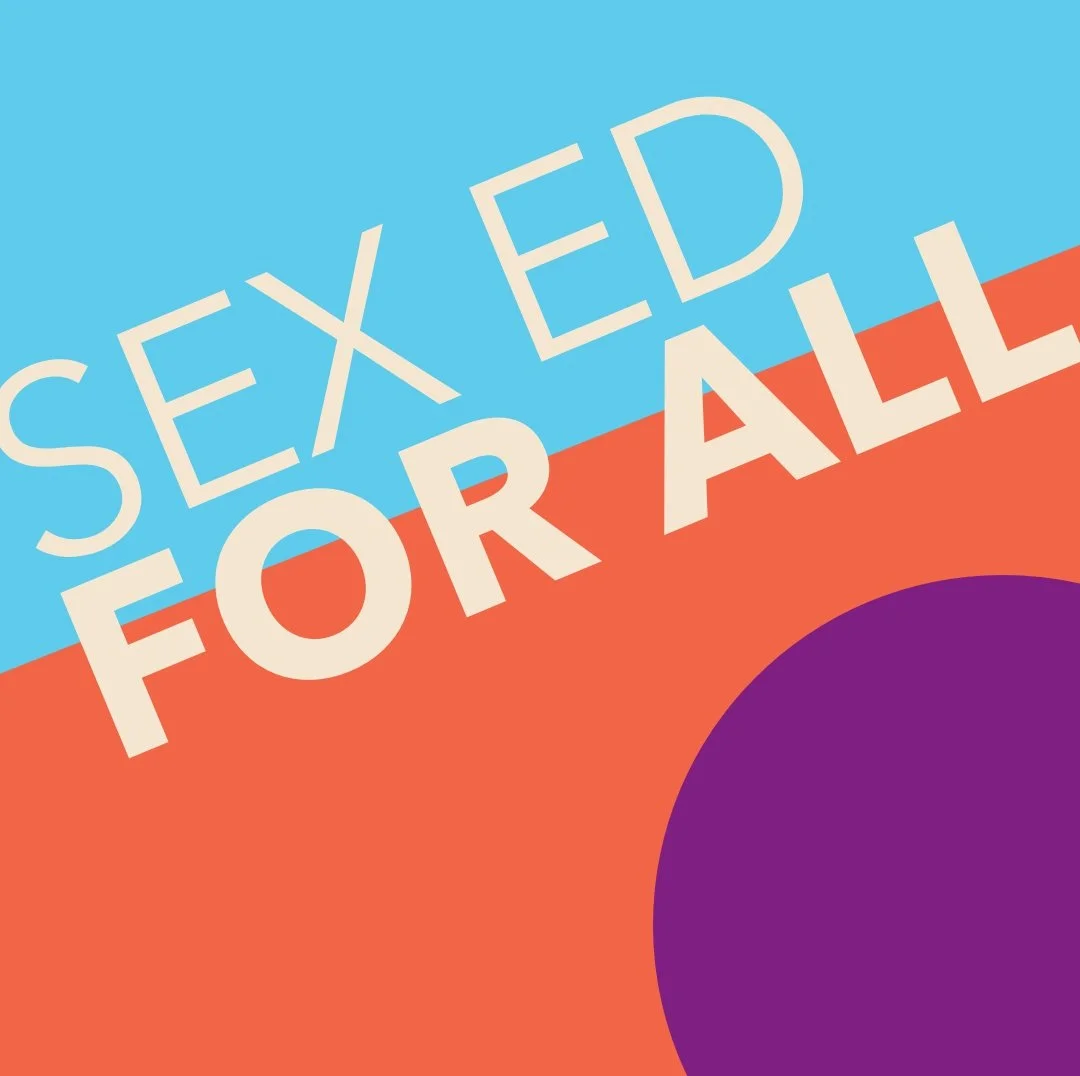May is “Sex-Ed For All” month, and when we say ALL, we mean it!
/By Emmalinda MacLean, MTSE Director of Content and Programming
May is “Sex-Ed For All” month, and when we say ALL we mean it! All bodies, all identities, and even though the thought makes some people uncomfortable—all ages.
More Than Sex-Ed is proud to deliver classes for kindergarten through twelfth grade, and we’re used to getting surprised reactions when we tell people about the age range we serve, too. But everybody has a body, and feelings, and relationships with others, from the day we’re born until the day we die, and there are age-appropriate ways to talk about all those experiences with people of every age.
So how do we determine what info is “age appropriate”, and what may be “too much, too soon”? The answers can be different for different kids, so we’re always aiming for the middle of the road when we teach classes. But in a one-on-one conversation with your own child you can customize your message a lot more. A few guiding principles we encourage adults to keep in mind:
If a child is asking a question, it means they’re ready for an answer—at least a simple one. Dodging sex-related questions can create feelings of shame or secrecy and make your kids less likely to come to you with more questions in the future. Remember, not saying anything says a lot too.
Young people deserve to have information about topics like puberty, dating, and sex before they have first-hand experience. If it’s something their peer group is starting to talk about, you should start talking with them about it too.
Representation of diverse identities is healthy and beneficial for children of all ages. Millions of happy, well-cared-for kids are raised by LGBTQ+ parents, and they deserve to see and hear about families like theirs. Queer kids exist and deserve to know there are other people who feel the way they feel. There is nothing inappropriate about knowing that different kinds of people exist, and having role models to look up to is lifesaving.
The areas where we advise the most caution are topics with the potential for trauma, like sexual abuse and assault. Which is not to say that these topics should be ignored; children should know what to do if an adult makes them feel uncomfortable, and they should know that they will be believed and supported if they tell you so. Normalizing boundaries and consent conversations for young kids can help them build these skills without introducing scary ideas.
By middle school, though, explicit conversations about sexual consent are absolutely necessary because children this age have most likely been exposed to pornography, and most pornography doesn’t depict the parties involved navigating consent. Countering that lack is critical.
But how do we deal with the “graphic” questions?
We always want to remind students that there is a “wide range of normal”, and what’s true for one individual or family may not be true for others. For instance when a young child asks how a sperm and egg come together to make a baby, we can say “sometimes adults bring their bodies together, and sometimes a doctor helps.” When older youth ask about specific sexual behaviors, we will let them know that [whatever it is] is something some adults do, after they’ve talked about it and agreed that it’s something they both want. Meaning: it’s ok if you don’t think you would like or want that. Consent is what matters.
Despite the fear and anxiety many adults feel around discussions of sexual topics with children, all the research shows that having these conversations early and often protects kids from abuse and increases healthy and responsible decision-making as they grow up. That’s all we’re here to do, and we’re always grateful for the support and partnership of parents and caregivers like you in keeping the conversation going.*
*https://www.jahonline.org/article/S1054-139X(20)30456-0/fulltext



